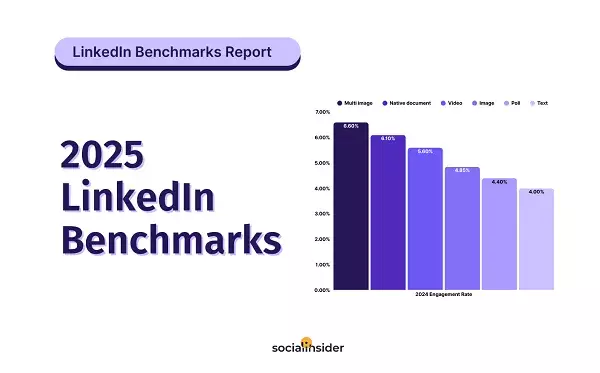In the realm of social media, the dynamic landscape has undergone significant transformations, especially for professional networks. The past year has marked a pivotal shift as brands increasingly turn their attention to LinkedIn, particularly in light of the tumultuous changes experienced by Twitter (now X). As organizations grapple with the fragmentation of social media channels, LinkedIn emerges as a reliable platform capable of fostering professional connections and driving brand engagement. This shift is not merely anecdotal; it is underscored by robust data revealing rising engagement rates across various content formats.
Data-Driven Insights: The Socialinsider Report
The continuous evolution of LinkedIn’s engagement metrics has not gone unnoticed. A recent comprehensive analysis conducted by Socialinsider—drawing data from an impressive one million LinkedIn posts sourced from 9,000 company pages—illuminates current trends and performance benchmarks. The report confirms an upward trajectory in user engagement, particularly spotlighting video content, which LinkedIn itself claims generates an impressive 1.4 times more engagement than other content formats. Nevertheless, Socialinsider’s findings nuance this narrative, emphasizing the remarkable effectiveness of carousel and document posts, which seem to dominate in engagement metrics.
What does this mean for brands navigating the LinkedIn ecosystem? The insights offered suggest a clear course of action: prioritize carousel and document posts if you aim to enhance audience interactions and visibility.
Decoding Engagement: An Analysis of Post Types
The data from Socialinsider reveals compelling statistics that should inform your content strategy. Carousel posts, which allow brands to share multiple images or slides in one post, not only captivate audiences but also drive engagement more effectively than traditional video posts. This may come as a surprise, especially considering LinkedIn’s assertion regarding the supremacy of video content.
Yet, understanding these nuances is crucial. This discrepancy may arise from the types of pages analyzed—Socialinsider’s focus on company pages as opposed to personal accounts could yield different engagement behaviors. Coupling this with findings from Metricool reinforces the notion that video and carousel posts represent a powerful duo for audience engagement.
LinkedIn’s own data shows that polls, on the other hand, command expansive reach through impressions, indicating that user interaction metrics vary based on post types. This speaks volumes about the need for brands to tailor their content to meet audience expectations, rather than following trends blindfolded.
Identifying Growth Patterns: Visibility and Content Strategy
Today’s LinkedIn landscape is not just about posting what’s trending; it’s about understanding your unique audience and the type of content that resonates with them. The insight that smaller pages exhibit robust follower growth serves as a reminder that success on LinkedIn is not merely a function of size but of relevance and connection. Companies with niche audiences often find more engagement as they curate content that speaks directly to their followers’ interests and needs.
Moreover, amid changes to link previews, there has been a marked preference for image posts, which now stand out more prominently in the feed due to updated promotional strategies on the platform. The nuances of how links are presented could compel brands to rethink their posting strategies—perhaps posting links in the comments section rather than as part of the initial post to ensure greater visibility and engagement with visually striking images.
Strategically Adapting to Infer Market Trends
Brands must be adept at recognizing and adapting to the evolving landscape of LinkedIn engagement. The focus should not solely be on delivering high-quality content but also on deploying formats that maximize the likelihood of interaction. Carousel posts, documents, and video should take center stage in your strategy, but they must be thoughtfully integrated into a more comprehensive engagement plan tailored to your unique audience.
This approach reflects a broader shift in how professional networking is evolving, with LinkedIn taking on an even more critical role as brands pivot towards creating dynamic, engaging experiences that draw in their audiences. In a world of social media flux, harnessing the power of LinkedIn effectively could mean the difference between a flourishing brand presence and fading into obscurity.


Leave a Reply